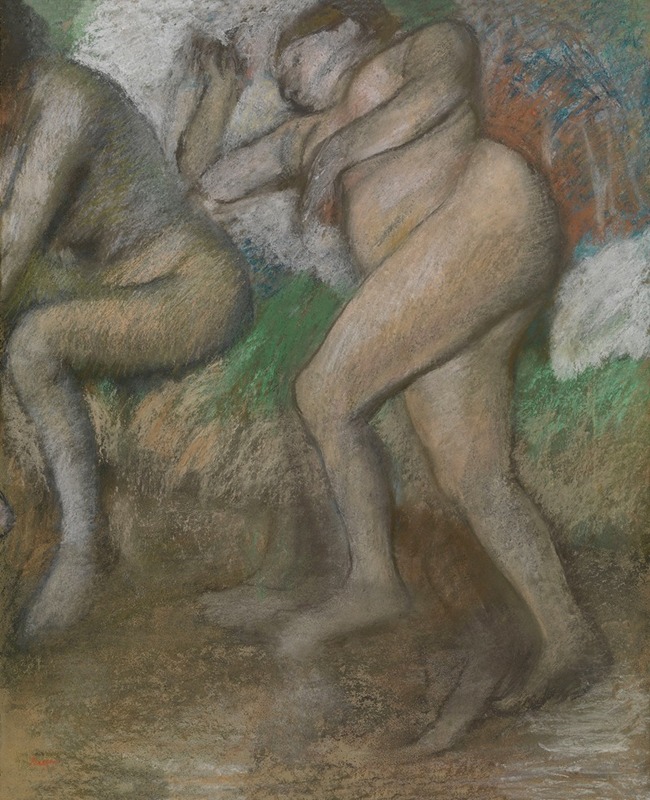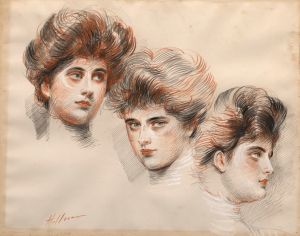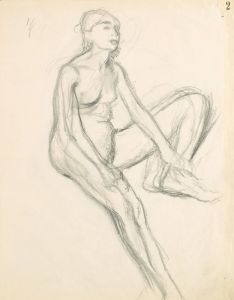
After the Bath
A hand-painted replica of Edgar Degas’s masterpiece After the Bath, meticulously crafted by professional artists to capture the true essence of the original. Each piece is created with museum-quality canvas and rare mineral pigments, carefully painted by experienced artists with delicate brushstrokes and rich, layered colors to perfectly recreate the texture of the original artwork. Unlike machine-printed reproductions, this hand-painted version brings the painting to life, infused with the artist’s emotions and skill in every stroke. Whether for personal collection or home decoration, it instantly elevates the artistic atmosphere of any space.
"After the Bath" is a series of paintings and pastels created by the French artist Edgar Degas between 1890 and 1900. Degas, a prominent figure in the Impressionist movement, is renowned for his depictions of dancers, women at their toilette, and scenes of everyday life. This particular series focuses on women bathing, capturing intimate and private moments with a sense of realism and immediacy.
Degas's "After the Bath" series is notable for its exploration of the female form and the act of bathing, which was a recurring theme in his later works. The series includes various compositions, each portraying women in different stages of bathing, drying themselves, or combing their hair. Degas's approach to these subjects is characterized by his use of unusual perspectives and cropping, which often gives the viewer a sense of peering into a private moment.
The artist employed a variety of media for this series, including oil paints, pastels, and charcoal. His mastery of these techniques is evident in the way he captures the texture of skin, the play of light on the body, and the subtle nuances of movement. Degas's use of pastels, in particular, allowed him to achieve a softness and delicacy that is well-suited to the intimate nature of the subject matter.
One of the most famous works from this series is "After the Bath, Woman Drying Herself," which is housed in the National Gallery in London. This pastel drawing depicts a woman seated on the edge of a bathtub, drying her back with a towel. The composition is notable for its dynamic use of line and color, as well as the way Degas captures the tension and relaxation in the woman's body.
Another significant piece is "Woman in a Tub," which is part of the collection at the Hill-Stead Museum in Farmington, Connecticut. This work shows a woman bending over in a tub, her back to the viewer. The perspective and composition create a sense of immediacy and intimacy, drawing the viewer into the scene.
Degas's interest in the theme of women bathing can be traced back to his fascination with the human figure and his desire to depict it in a naturalistic and unidealized manner. Unlike many of his contemporaries, who often portrayed women in idealized or mythological contexts, Degas chose to depict them in everyday, unguarded moments. This approach was both innovative and controversial, as it challenged traditional notions of beauty and propriety in art.
The "After the Bath" series also reflects Degas's broader interest in capturing movement and the effects of light. His use of pastels allowed him to experiment with color and texture, creating works that are both vibrant and subtle. The series is a testament to Degas's skill as a draftsman and his ability to convey the complexity of the human form.
Overall, Edgar Degas's "After the Bath" series is a significant contribution to the canon of Impressionist art. It showcases the artist's technical prowess, his innovative approach to composition, and his commitment to depicting the human figure in a realistic and unidealized manner. These works continue to be celebrated for their beauty, intimacy, and insight into the private moments of everyday life.


















